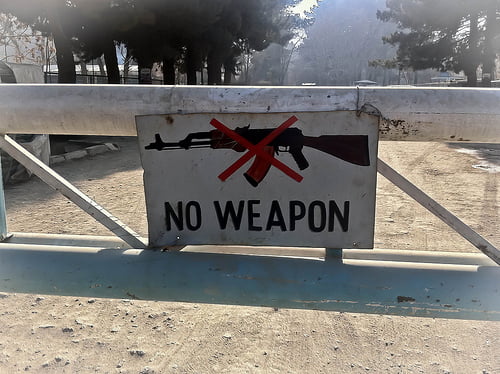By the end of 2014, close to all of the foreign troops currently in Afghanistan will have left, and the Afghan security forces will have been built up to approximately 352,000 personnel. Starting in 2015, that number will be reduced to around 230,000 personnel, largely through attrition, according to the New York Times.
Does anyone else see why this might be a problem?
After creating a massive security sector and equipping it with hundreds of thousands (millions?) of weapons, donor countries will dramatically reduce funding and expect 120,000 military and police personnel to hand in their guns, go home, and live peacefully. In a country with chronically high unemployment and a looming recession. At a time when that country will be at high risk of descending into factional civil war. That’s a recipe for increasing violence within Afghanistan’s borders and spreading insecurity beyond them. There is real danger in the possibility that today’s army recruit could become 2015’s gun for hire.
“At the very least, a DDR [demobilization, disarmament, and reintegration] strategy needs to be discussed NOW,” Trevor Keck of the Campaign for Innocent Victims in Conflict (CIVIC) tweeted in response to the planned downsizing of the Afghan security forces.
Keck is right –as 2014 approaches, NATO and its allies have a responsibility to create a plan for preventing young men who cycle through Afghanistan’s unwieldy security forces from becoming menaces to the civilian population.
As is, the Afghan security forces are ill-prepared to avoid harming civilians as they prepare to take the lead in military operations throughout the country. In a recent blog post for CIVIC, Keck warned:
Afghan security officials I meet with claim their forces do not and will not harm civilians because they understand local dynamics better than international forces. This is dangerously naïve. While Afghan forces are certainly better positioned to understand the situation around them, civilian casualties are an unfortunate—if not inevitable part of war—especially when militaries with less experience, training and equipment are waging battle. Without processes in place and a mindset that prioritizes civilian protection, Afghan troops will likely act with less concern for civilians.
Recently, representatives from ISAF and the Afghan government have stated their commitment to establishing an Afghan system for tracking civilian casualties. These are heartening words that must be met with action. It will take time to implement such a system and get buy-in from commanders. And for it to work, Afghans will need to own the process. As one insider told me, “it was hard enough to get NATO forces to be proactive about preventing and responding to civilian casualties.” Getting a less experienced military behind it may prove even more difficult.
And then there’s the issue of the surplus weapons the downsized security forces will no longer need. Will those weapons be destroyed? If not, how will they be kept out of the hands of militiamen, insurgents, and arms traffickers? Even with the current level of international support, the Afghan security forces have serious problems with infiltration and loose weapons. It’s hard to believe that won’t still be the case in January 2015.
While I have no doubt that the last thing NATO wants is for Afghanistan to collapse into civil war or turn into Central Asia’s bargain bazaar for small arms, the Alliance needs to consider how its current strategy might help bring about those outcomes.
Photo credit: Peretz Partensky
